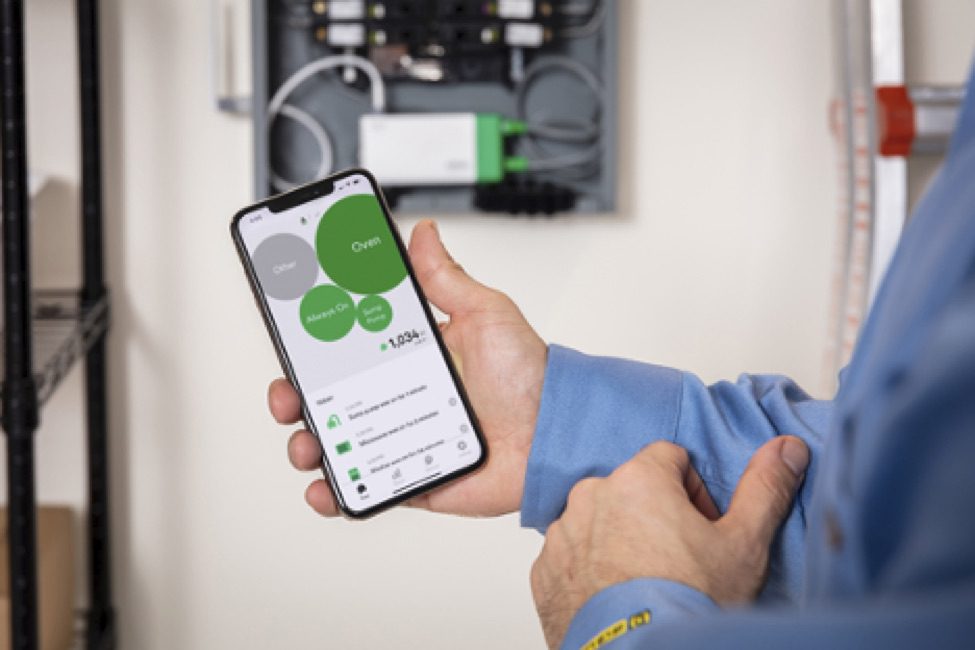In this post-pandemic world, ‘home’ is where our lives are. It’s the place where we work, connect with family and friends, where we entertain and unwind. Home can be a place to build memories as well as a source of our future prosperity. We instinctively trust our homes to be safe – and we invest significant time and energy into making them secure. But are we protecting our dwellings from all of the right threats? And is the role that smart, net zero homes can play in assuring our security and our future?
It’s commonplace to think of some of the better-known risks such as fire and burglary first. Yet our homes – if they aren’t designed to be future-proof, smart and net zero – are also vulnerable to other, newer and largely unforeseen threats: climate change and natural disasters. On the horizon, population growth and accelerated economic development are combining to create a perfect storm for the people who live at the forefront of ecological change.
For instance, 60% of the world’s population, myself included, currently live in the Asia Pacific region, which is projected to see significant growth in new buildings and infrastructure over the coming decades. Consider that in Hong Kong buildings account for over 90% of electricity consumption and produce over 60% of carbon emissions. Yet, the APAC region is also one of the world’s most vulnerable to climate change. It’s clear that the decarbonization of the built environment – be it net zero homes, community spaces or offices – needs to be achieved, and urgently.

Energy efficiency starts at home
It is a self-perpetuating circle. The more emissions we produce, the more unpredictable weather patterns are likely to become. That’s why decarbonization and emissions reduction have always been a core strategy in the fight against climate change. Immense progress has been made over the years, with many countries and industries adopting environmentally sustainable practices. Yet homes have long been a blind spot. Households are growing into one of the largest producers of CO2 emissions. This trend will likely accelerate as electric vehicles (EVs) become more pervasive and EV charging at home picks up.
It’s necessary then that we rethink how we build and run our homes – not only to protect them from direct damage, but to ensure they deliver sustainability at their core. Embedding clean and smart methodologies into building construction and operations helps to protect the planet and the things that we love. In the domestic sphere, the fastest way to achieve this is through IoT-connected smart, net zero home technologies. [Read: When it comes to tackling emissions, home is where ‘the smart’ is]
Smart sensors and devices, placed at key points of a home energy system, give homeowners access to a new world of data and insights. When connected to a central dashboard, they can report back crucial information – everything from consumption data to carbon emissions produced by a specific room on a certain day. With enough granularity, a homeowner or occupier can see what rooms or specific appliances are consuming the most energy. Often, the results can be surprising and help to pinpoint areas of waste they didn’t even know existed.
With fresh insight gained from smart devices, people can finally take control of their energy consumption. They can see where the problems lie and moderate their behavior to eliminate unnecessary wastage. This not only reduces emissions, it cuts energy costs in the home. Over time, smart and net zero home technology isn’t just good for the planet, it’s good for people’s energy bills.
Embedded safetyEmbedded safety
Slashing domestic emissions will aid in the fight against climate change. In an indirect way, this will be crucial to protecting our homes and loved ones from the ‘symptoms’ of climate change such as extreme weather, heat waves or abnormally cold spells. However, smart and net zero home technology can also help to defend us from both the ‘front of mind’, and harder to predict dangers.
Home security systems have been steadily gaining in popularity, growing 7% CAGR year-on-year, and can easily be integrated within a smart home management system. But to be reliable, such systems need access to uninterrupted power, which modern smart home technologies can guarantee through renewable energy generation and storage even when access to grid power is unavailable, making our homes more resilient. What’s more, placing IoT-connected devices around the home can also alert occupiers to potential faults and issues. An unresponsive sensor could indicate a damaged piece of wiring that the occupier can resolve before it grows into a larger issue. In this way, smart and net zero home technology becomes a guardian against intrusion as well as the risk of electrical fire.
Many of the threats facing our homes today are abstract or invisible. The damages caused by a fire, a climate change-linked flood or storm are difficult to appreciate, until they have actually struck. Yet the consequences can be severe indeed. That’s why we need to protect our homes from growing environmental threats as well as more immediate or tangible dangers. Fortunately, smart, net zero home technology is an invaluable ally here in every respect. Digital makes the invisible visible, allowing us to live safer and more responsible lives, while efficient energy use helps us put a lid on emissions. By being smarter and more data-driven in our approach, we can truly become the master of the house. And our planet’s destiny, when it comes to sustainable living.
Home Energy Management Systems (HEMS) are paramount if we need to practice sustainable lifestyle at home, its both an moral and economic imperative to limit of CO2 emissions. I recently, had an fantastic oppurtunity to sit with Danel Talero from Guidehouse Insights on the second episode of ‘Climate Change with Net Zero Homes’ podcast, to chat about one of the most pressing issues since the world went into lockdown one year ago and the importance of HEMS in homes of the future. Click Here to Listen!




